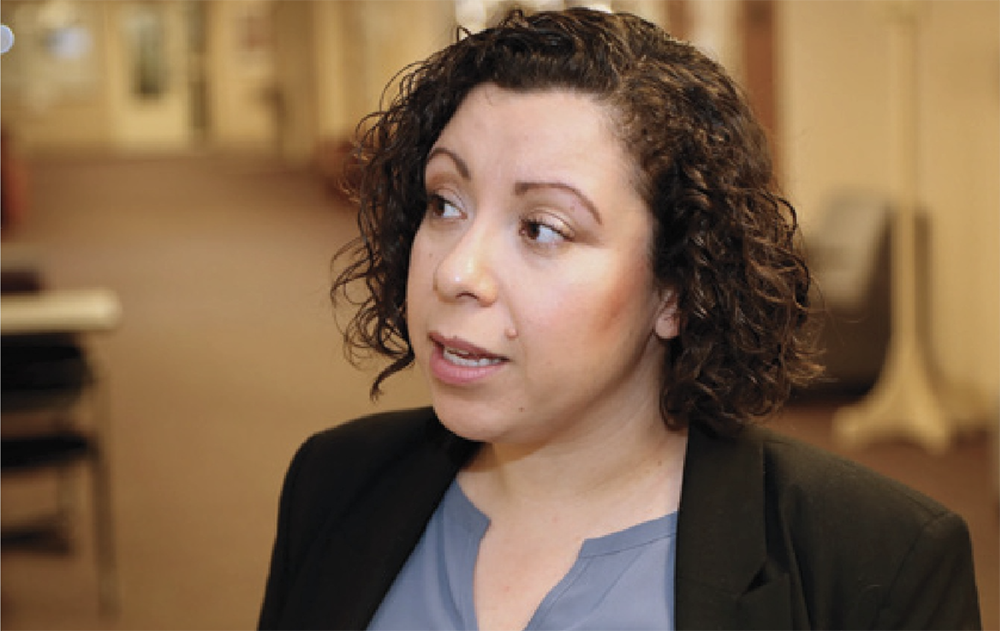
Combating Racism in the Classroom
Created by Claudia Rodriguez-Mojica, the Anti-Racist Collective of Bilingual Educators offers tangible steps for change.
During the final Zoom session of the school year, members of Santa Clara’s Anti-Racist Collective of Bilingual Educators (ARCoBE), looked over lesson plans, bookmarks, pamphlets, and websites they had created and hoped to use in their classrooms.
One pamphlet read in Spanish, “Que significa ser anti-racista?” or “What does it mean to be anti-racist?”
The projects marked the culmination of a year-long journey aimed at better understanding and combating systemic racism and white supremacy in communities and schools. ARCoBE’s work was far from done, but these materials represented a meaningful first step, one that went past words and laid out a plan for real progress.
Galvanized by the murder of George Floyd in May 2020, Claudia Rodriguez-Mojica, an associate professor and the Coordinator of the Bilingual Education program in Santa Clara’s Department of Education, launched the Anti-Racist Collective of Bilingual Educators (ARCoBE), a free, optional program that teaches current and former bilingual authorization students about the history of anti-blackness and how to develop ways to combat racism in education and beyond.
What started as a way for SCU’s bilingual teachers to express intimate thoughts and emotions and move forward from a dark moment in America has grown into a grassroots effort to make teachers of all subjects skilled in anti-racism practices. All of the educators who participated in the collective were Spanish speakers, which added a level of intimacy and inclusion that not only made participants feel comfortable, but challenged them to confront racism in Latin America, said facilitators Michelle Rosas-González MA ’20 and Héctor González Rodas MA ’20.
Rosas-González and González Rodas helped create and facilitate the collective’s work and have been instrumental to its continuation. The pair will soon start teaching in the dual-immersion, Juntos Program at San Miguel Elementary School in Sunnyvale.
“As bilingual teachers, as educators who work with Black and brown students, we realize that our role is critical,” said Rosas-González. “We have to engage these conversations very carefully, not only with our students but also our families, our community members. More than anything, we wanted to better prepare and inform ourselves and take action in some way, particularly in response to the inequities that exist in our current education system and in our greater society.”
The program has several elements, including history lessons on the origins of racism in the U.S. and Latin America and book club discussions focused on writers of color, such as Ibram X. Kendi’s How to be an Antiracist.
“It was very beautiful to see how all of our colleagues came together,” González Rodas said. “I also think the simple fact that the space was bilingual offered a more welcoming space for our colleagues. We know that this is something that also happens in the Latinx community and unfortunately, there’s a lot of ignorance around the topic. I think Professor Mojica really wanted to tailor this to our community as well.”
Mojica, Rosas-González, and González Rodas plan to continue the collective in late September with a new cohort of bilingual students. They also plan to create a website for the collective that will include the learning materials they created, thus continuing the legacy started in 2020 and expanding ARCoBE’s reach to provide access and resources to more bilingual educators.
“Students are young enough to understand and to experience racism, so they’re also young enough to start talking about it,” Rosas-González said. “More importantly, as teachers, as adults stepping into classrooms, we really, really need to start engaging in these critical discussions, especially with colleagues, especially with folks who still have pretty racist notions. Ultimately, there are teachers who are fostering this environment for their students. And there’s nothing worse than having a teacher who either denies racism or in some way continues to uphold it.”